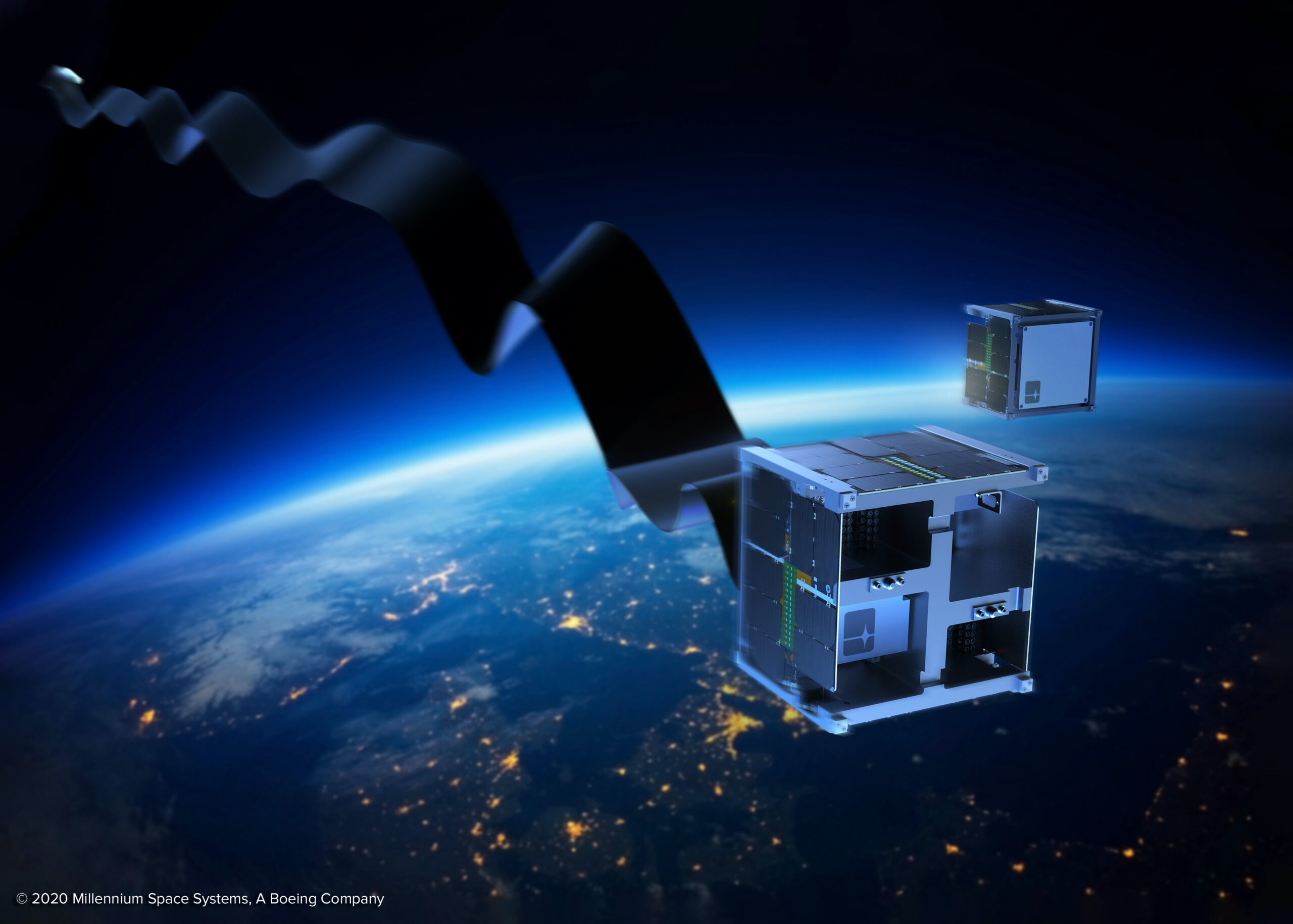Tom Russell, interim CEO of Millennium Space Systems, said the technology is a possible solution to the growing problem of orbital debris congestion.
WASHINGTON — Boeing subsidiary Millennium Space Systems announced Dec. 7 that an experiment launched to space last month will show a small satellite can safely deorbit in about 45 days.
Two Millennium Space small satellites flew Nov. 19 to low-Earth orbit on a Rocket Lab Electron launch vehicle from New Zealand. In the experiment named DragRacer, both satellites were ejected simultaneously. One has a deployable tether and other does not. Millennium Space predicts that the tethered spacecraft will reenter the Earth’s atmosphere and burn up in 45 days while the untethered one could take more than seven years.
Tom Russell, interim CEO of Millennium Space Systems, said the technology is a possible solution to the growing problem of orbital debris congestion.
One of the satellites has a 230-foot Tethers Unlimited Terminator Tape that was unfurled in low-Earth orbit. The tether increases the surface area of the spacecraft and accelerates its return back to Earth. The other satellite is expected to follow a natural decay trajectory of between five and seven-and-a-half years.
Amateur satellite trackers can follow DragRacer and provide data and images in a web portal.
